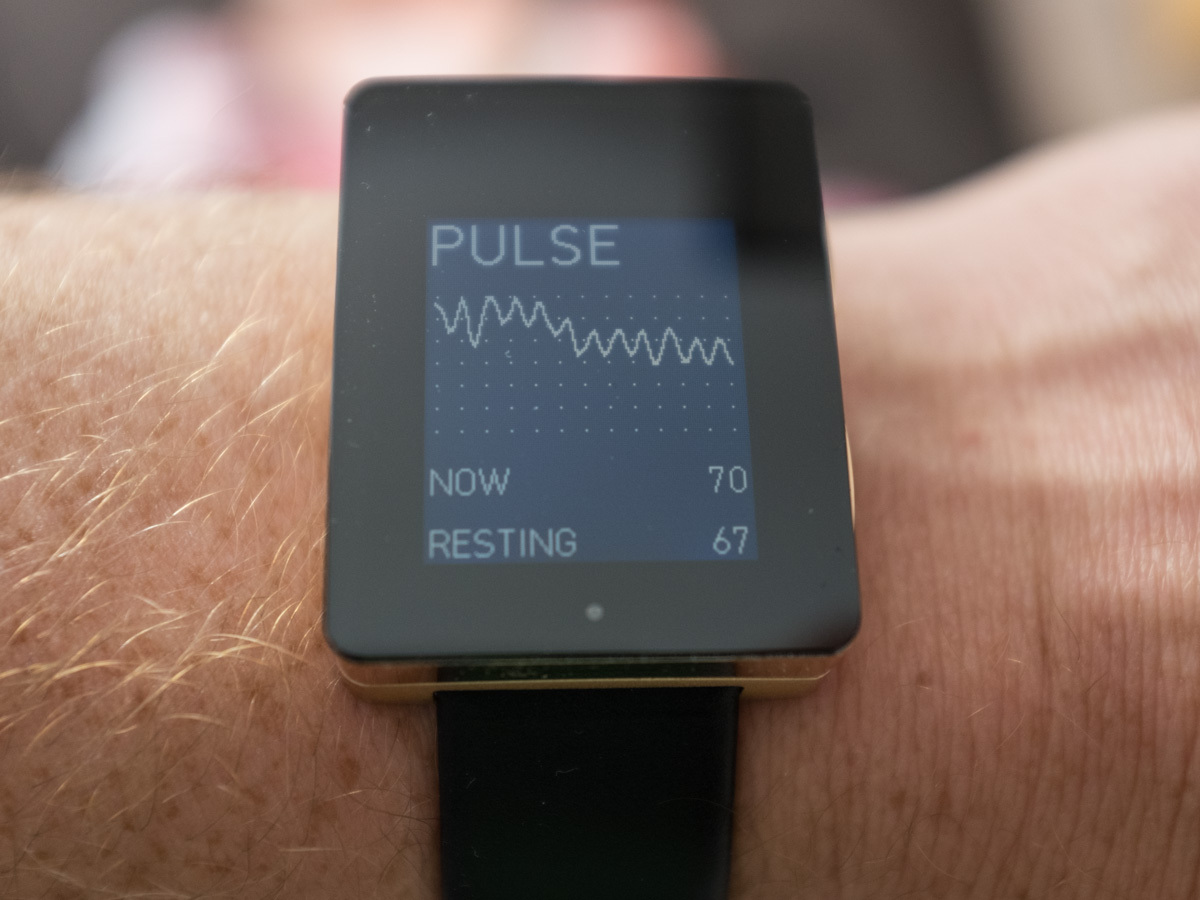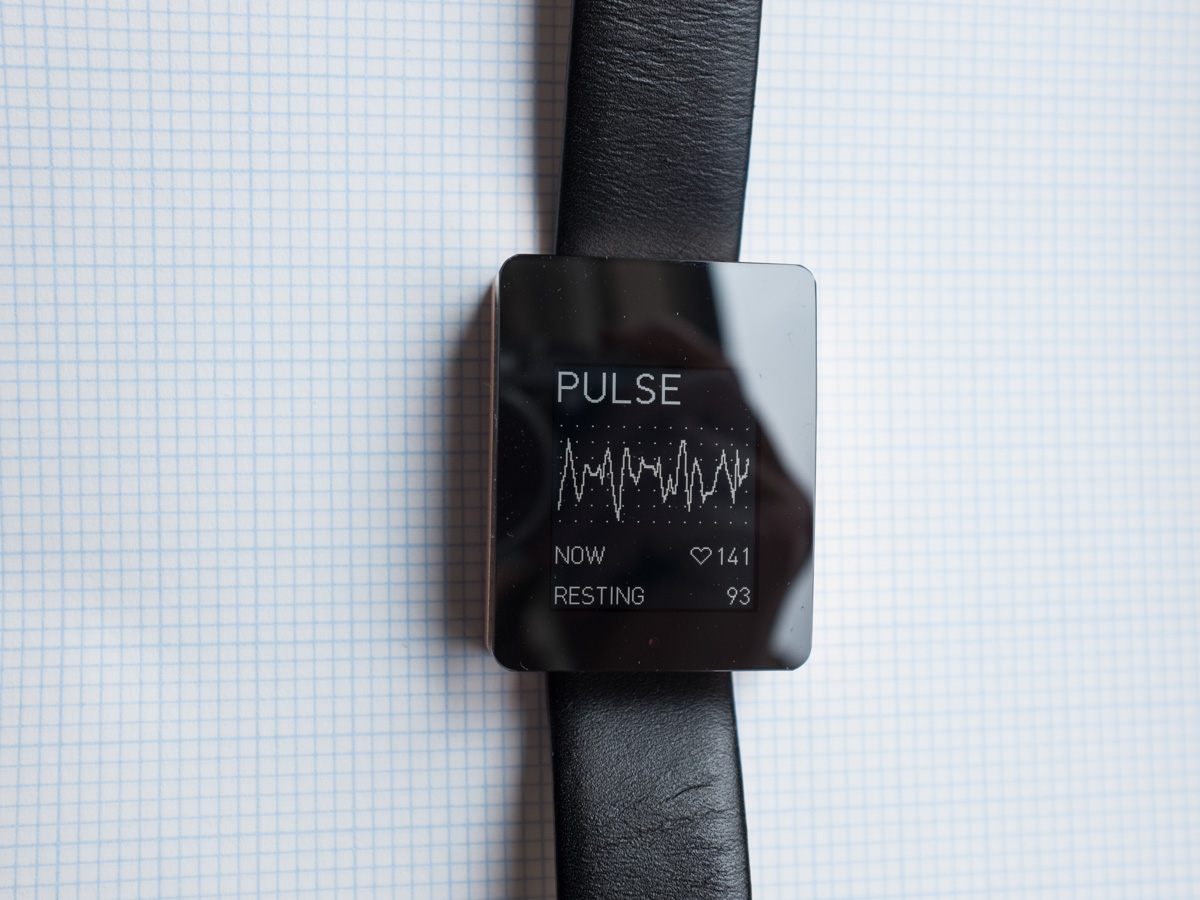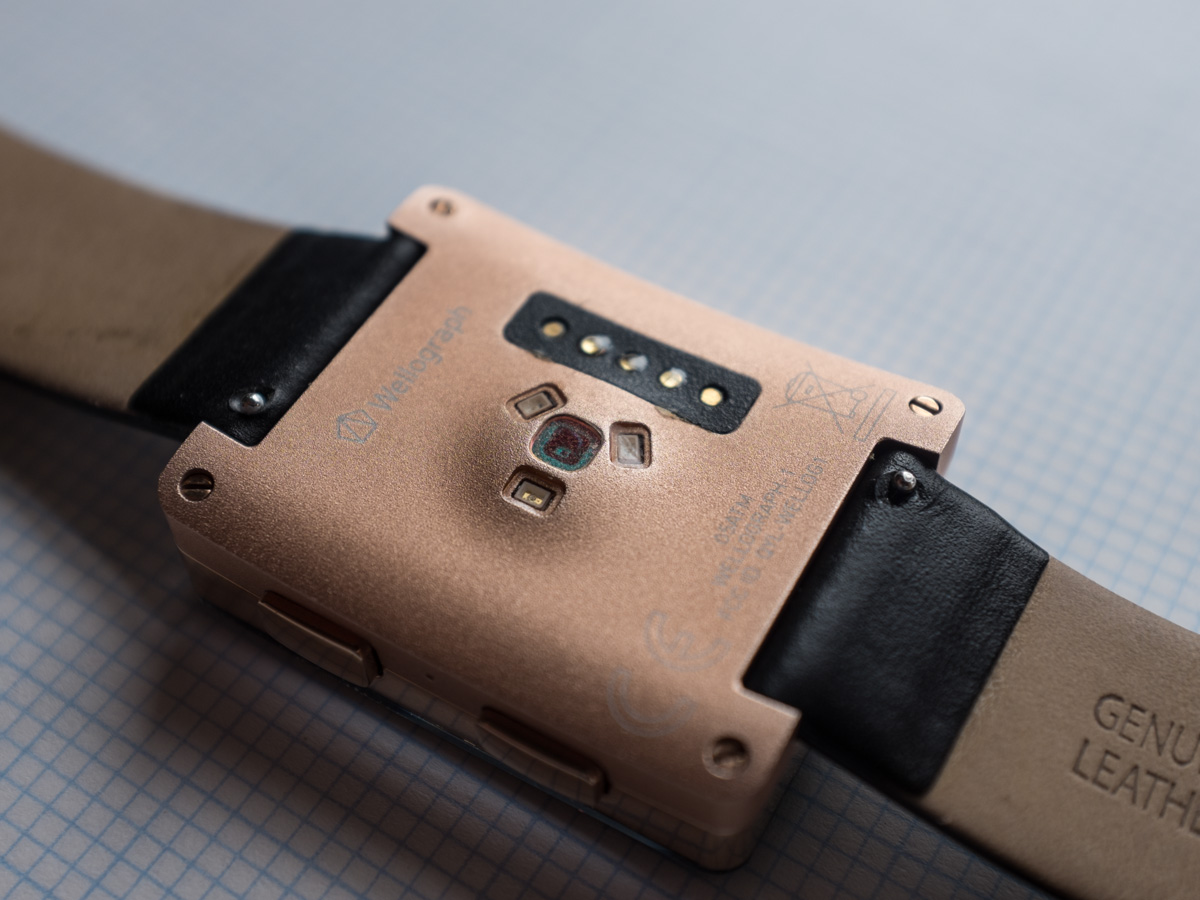Wellograph review
Fashion and fitness aren't always easy bedfellows but this well-heeled tracker aims to change all that
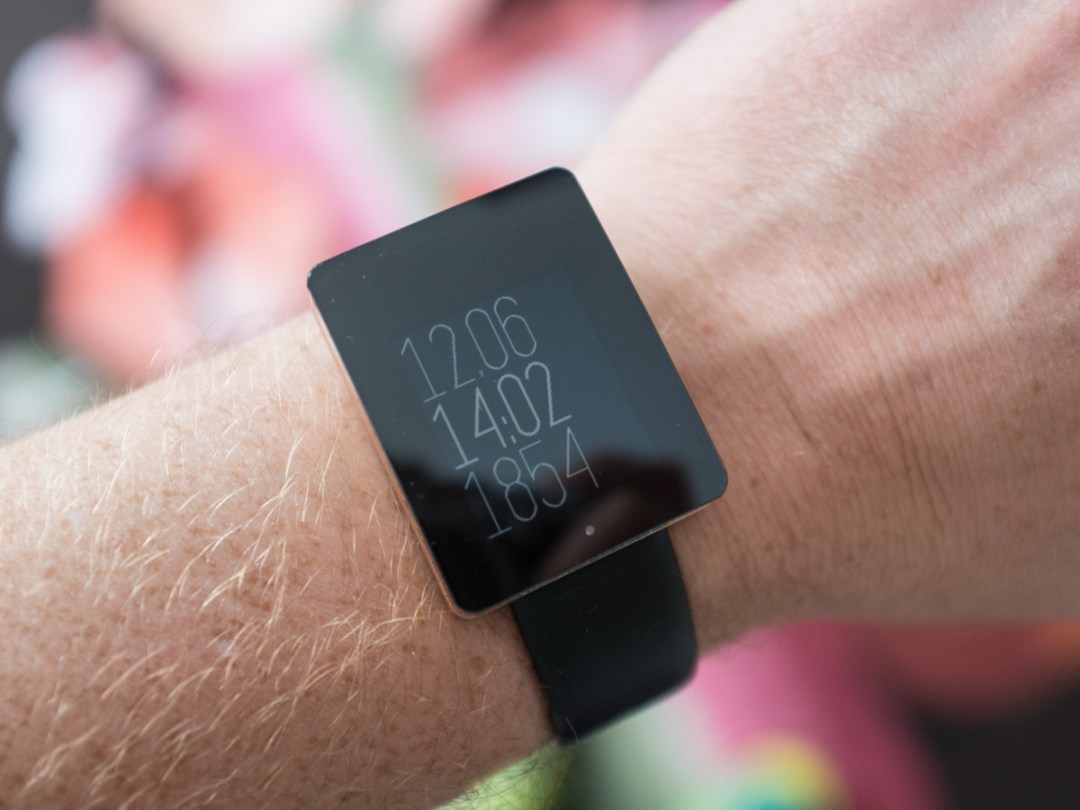
Working out is rarely a good look unless you’re an elite athlete: with sweat stains and saggy Lycra generally holding sway, there’s not much room for fashion down the gym.
And for the most part the same could be said of fitness trackers. Most go for a style best described as ‘inoffensively nondescript’ while others aim for ‘ruggedly practical’ and the prettiest among them just about achieve ‘subtly attractive’.
The Wellograph, though, is a different beast entirely. Its sporting ambitions are clear – it logs daily step counts and other activities by way of its 9-axis accelerometer and also monitors your pulse via an integrated optical heart-rate monitor – but its clothes are more city boy than gym bunny.
Of course it’s what’s, erm, underneath the clothes that really count. And on that front the Wellograph struggles.
Smart (looking) watch
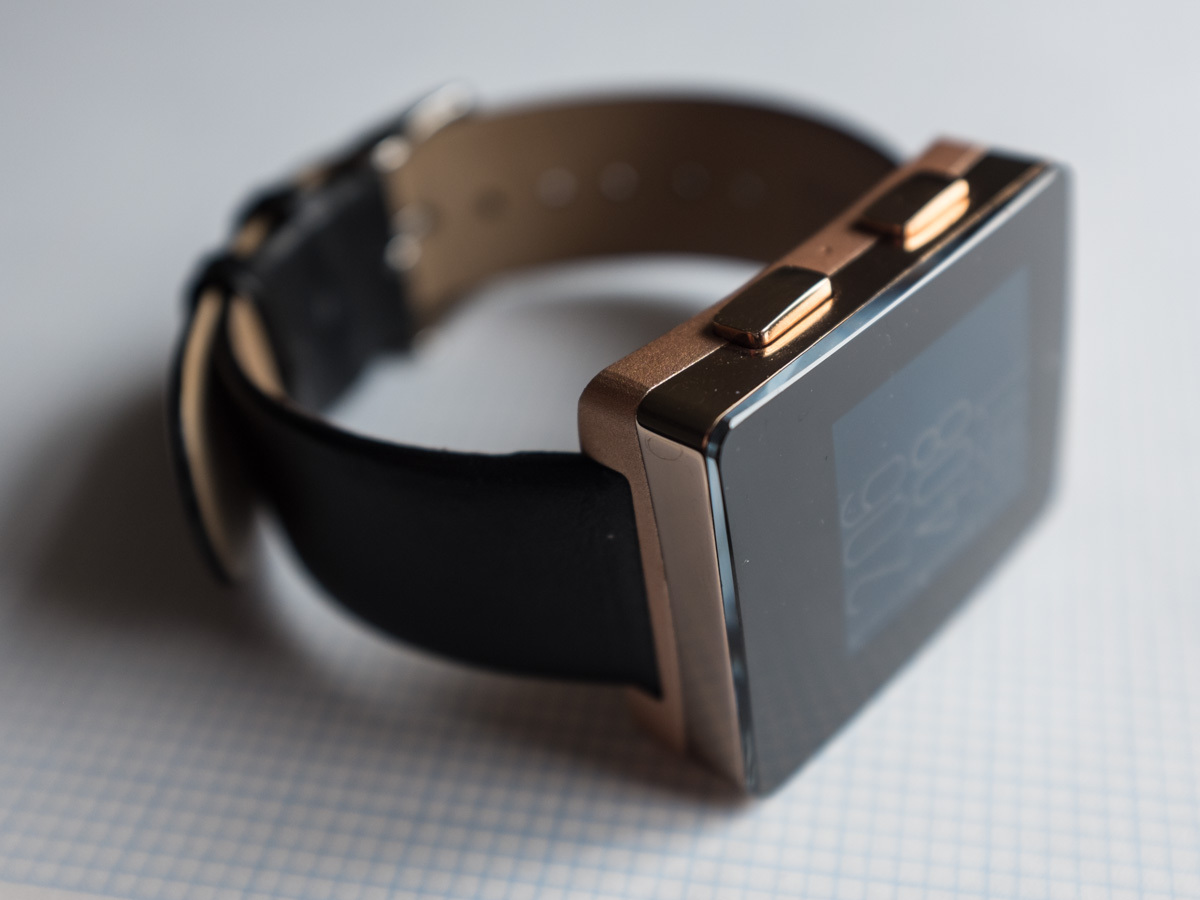
But first, the good. The Wellograph is an attractive and well-made slice of smartwatch, with a sleek, sophisticated style and premim-feeling build.
That said, it took us a while to get used to it. Although looking like a posh timepiece isn’t in itself a bad thing, our ‘pink gold’ test unit was, frankly, a bit too flash for our tastes. It’s definitely more at home accessorising a business outfit than it is in the gym or out running.
But flash though it may be, it’s also pretty solid, plus waterproof to 50m; Wellograph advises that showering and swimming with it is OK, but not diving – though you would look very James Bond doing so.
The 20mm leather strap has quick-release pins and there’s an optional rubber version available. Or you could choose your own standard strap.
RELATED › The best sports headphones of 2015
Control peak
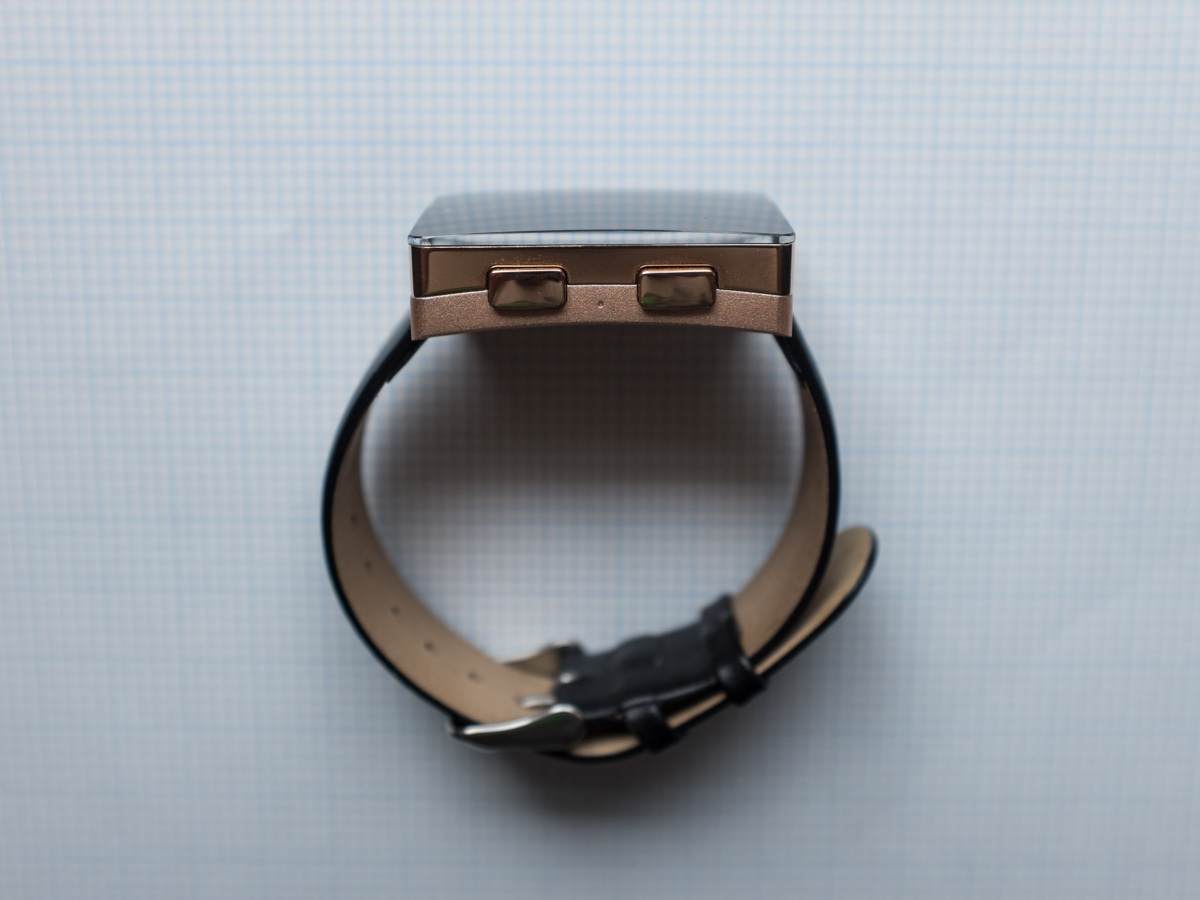
The good news continues with the control system. There’s no touchscreen here, and that’s fine with us. Instead, the Wellograph keeps its controls simple, with just two buttons on its side; one moves through menu items, the other selects them.
The UI is effective too. Pressing both buttons moves you back through the menu items, while holding the lower button returns you to the home screen and holding the upper button turns on the Bluetooth syncing.
The various screens are clear and precise and there are nice touches such as the display rotating to remain upright when you sit it on its charging dock. That monochrome LCD display is quite reflective but easy to read in bright sunlight, plus there’s a basic backlight for use after dark and we love the standard digital watch face layout, which elegantly gives the date, time and daily step count in big numbers that fill the screen.
Broken hearted
Sadly, things start to fall apart a bit when you actually start using it for fitness tracking – which is, after all, the thing it’s designed for.
Round the back of the Wellograph there’s a tri-LED heart-rate sensor, which flashes its green light at your wrist to divine your heart rate. Unfortunately, while it’s extremely convenient having it on the watch itself, the results when using it vary wildly.
Keeping the strap done up reasonably tight isn’t particularly uncomfortable – unlike, for instance, the Basis Peak. However, even with some decent tension the heart-rate figure jumps all over the place.
When compared to a Garmin 920XT with heart-rate chest strap, the difference is clear. A 10-second burst of running on the spot predictably took the heart rate from 83 to 112 on the Garmin, while the Wellograph moved from 78 to 84 and stayed there until jumping again to 93, when out heart rate was really already on its way back down.
At other times the opposite happened – while sitting quietly the Wellograph would read up to 140bpm and swing wildly above and below the actual heart rate before settling on a similar number to the chest strap reading 30-40 seconds later.
As general health data goes, being able to see your heart rate on your watch in day-to-day life is a vital one for giving you an insight into your own condition. However when the readings are as inconsistent as this, there’s little point in having it.
Out of step
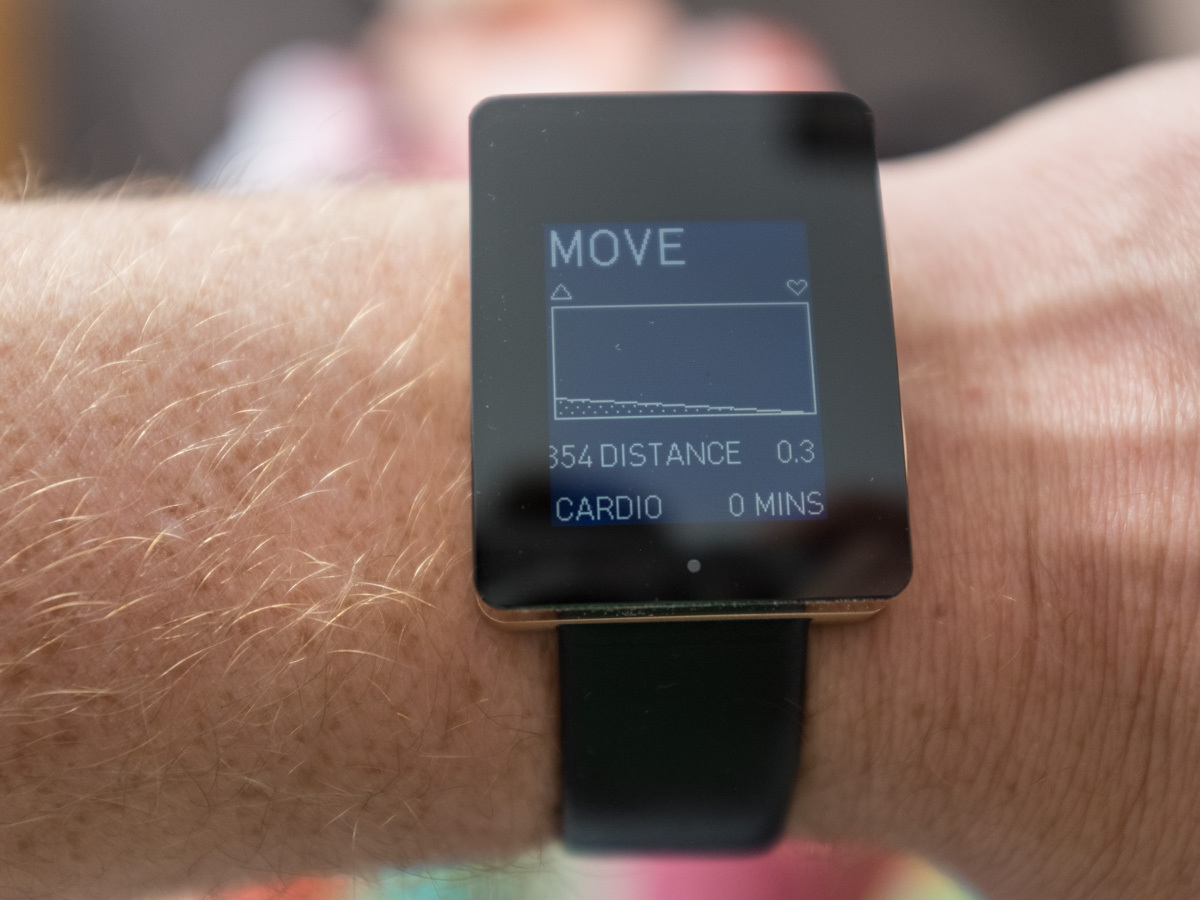
If that had been its only flaw, we might have been able to forgive the Wellograph – but unfortunately the step-counting was equally off the mark.
For our first few days with the watch we simply wore it to get used to its feel, without paying much attention to the tracking side. But when we actually looked at the figures it was producing, it soon become apparent that something was wrong.
Though quite encouraging given our sedentary behaviour over those first few days, the data clearly wasn’t right: a day spent working from home plus a quick car trip clocked us at around 7500 steps – a result that would usually require around an hour of walking. And nor was that a one-off: the results were consistently optimistic, once registering 645 steps for us before we even got out of bed.
Sleep tight
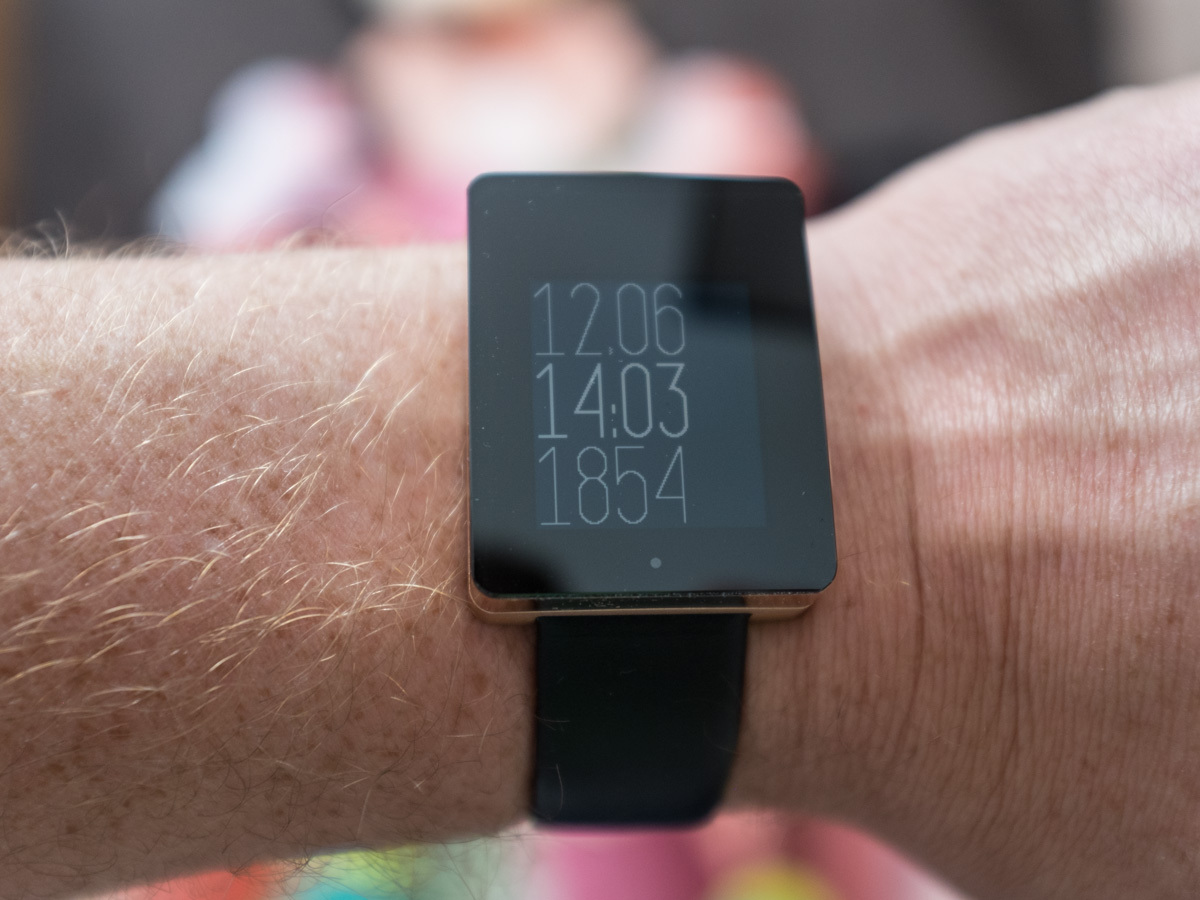
The one thing that the Wellograph did seem to get right was sleep tracking. In fact, it excelled on this front, recording our journeys to the land of nod almost to the exact minute while also serving up useful information about how many times we woke and the quality of the sleep we were getting.
The Wellograph is a little bulky, so it’s not the most natural thing to wear in bed, but we soon got used to it and the data it collected was all represented beautifully both on the watch and its companion app (see below for more on that).
Ready and able?
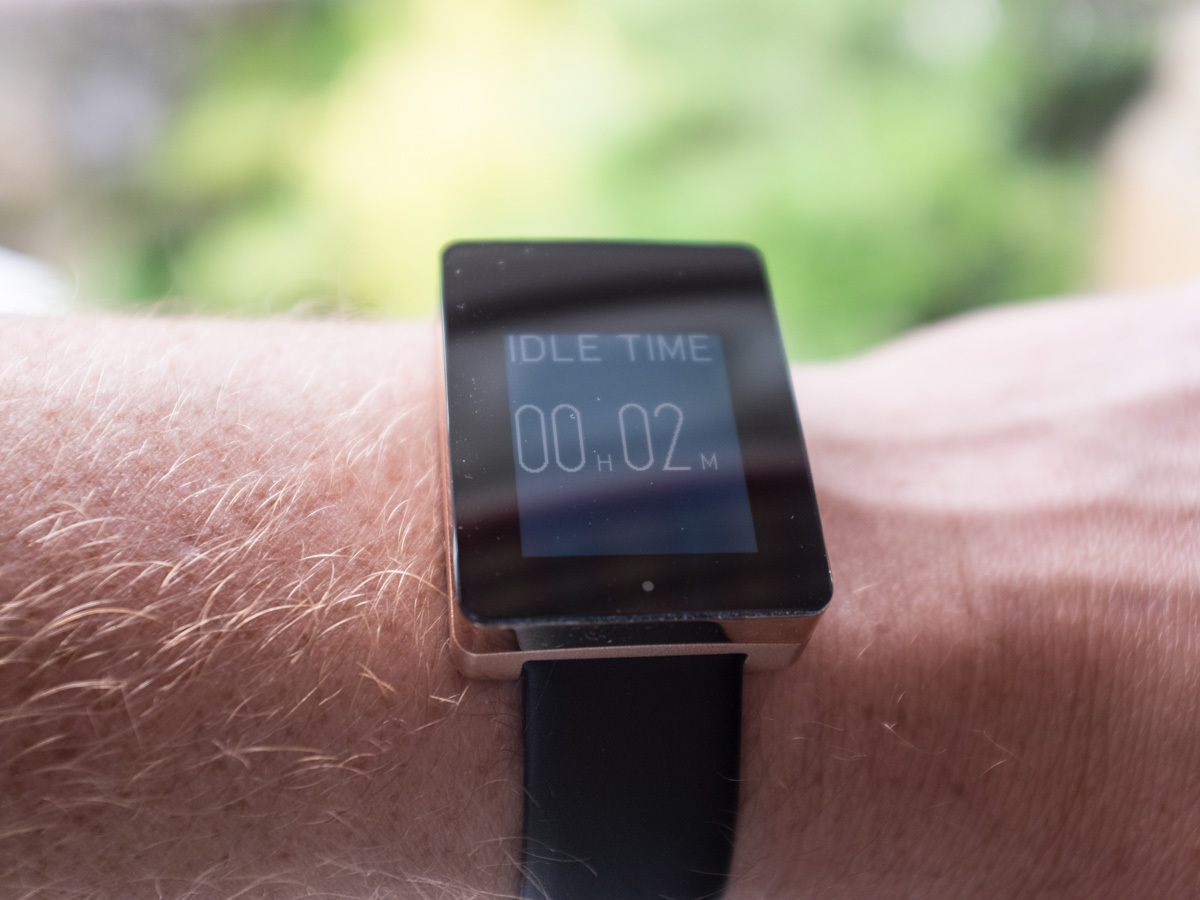
One of the Wellograph’s less common features is its ‘Readiness’ calculation, which sees it take two minutes of heart-rate readings then use the resulting heart-rate variability (HRV) data to decide whether you need a bit more rest or you’re ready for exercise.
Unfortunately, given that it relies so much on the inconsistent heart-rate data, we didn’t find it to be much use in practice. In fact our unit was never convinced we were ready for exercise at all, which, given that it’s supposed to be a fitness tracker was a bit of a problem.
The same problem afflicted the ‘Fitness’ stat, which consists of ‘%tile’ and ‘fitness age’. As with ‘Readiness’, the accuracy of the heart-rate data was soon called into question, with the percentile reading varying from 67 to 83 while our fitness age moved about between 23 and 43, via 0 over the course of three days. We assume having the fitness of a newborn is a bad thing.
Appy days
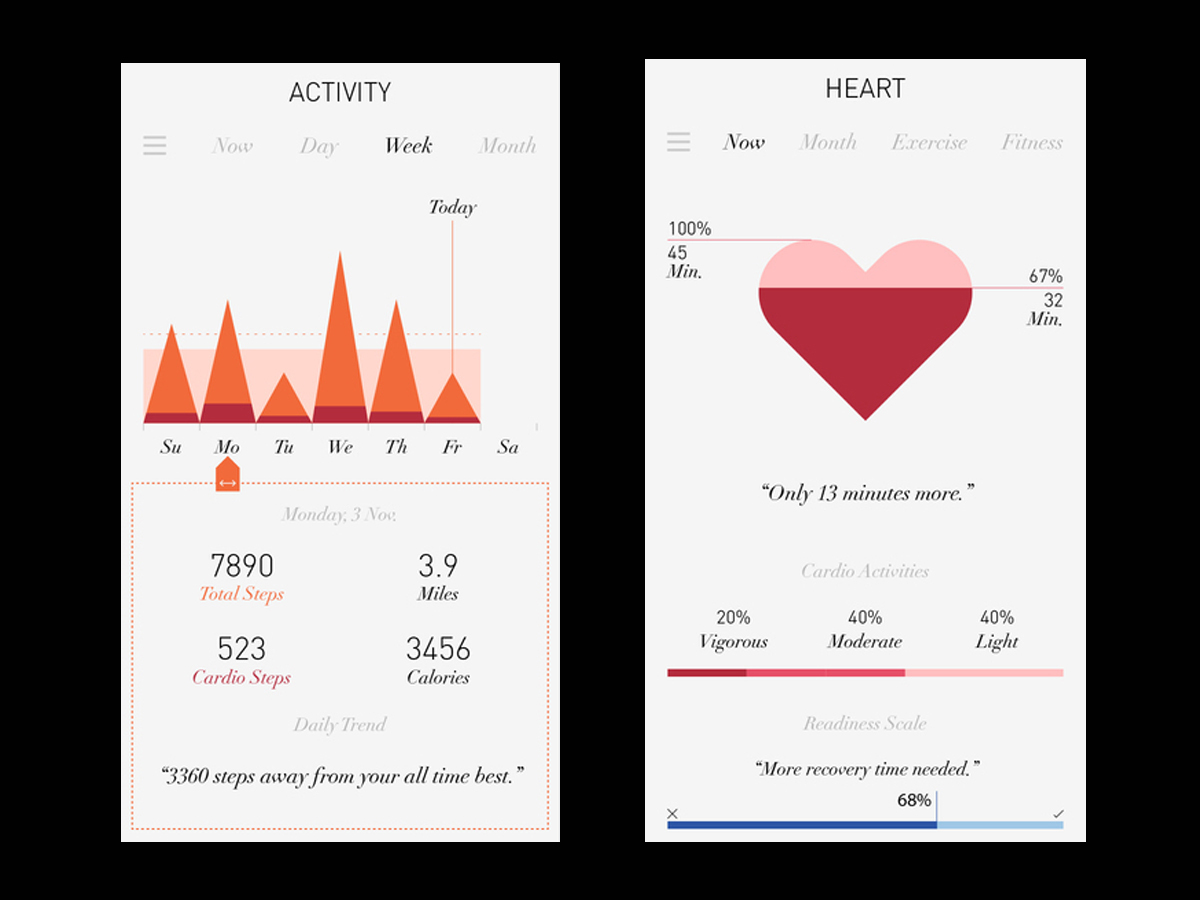
All of which is a real shame given the quality of its app. It’s a beautifully-presented thing, from the neatly laid-out homescreen, to the more in-depth graphs and measurement pages.
These don’t add a lot to what you can already see on the Wellograph watch, but the whole thing is (obviously) bigger and more colourful. The app connects with Google Fit, RunKeeper and MapMyFitness, though you can record up to four months of data on the watch itself.
If the accuracy was better, we would have liked the option to use the Wellograph as a Bluetooth heart-rate monitor with other fitness apps.
RELATED › Fitbit Charge HR review
Juice burst
Another plus point for the Wellograph comes in the form of its 210mAh battery. It has a claimed life of up to seven days but although we only managed around five, that’s pretty good considering that the display is always on and it’s checking your pulse at regular intervals.
Charging is done via a USB dock which the watch clips to magnetically; it’s simple and as it doesn’t need doing very often, isn’t a hassle. Plus, the rotating display means it will sit nicely on your bedside table in clock mode as it charges.
Wellograph: the verdict
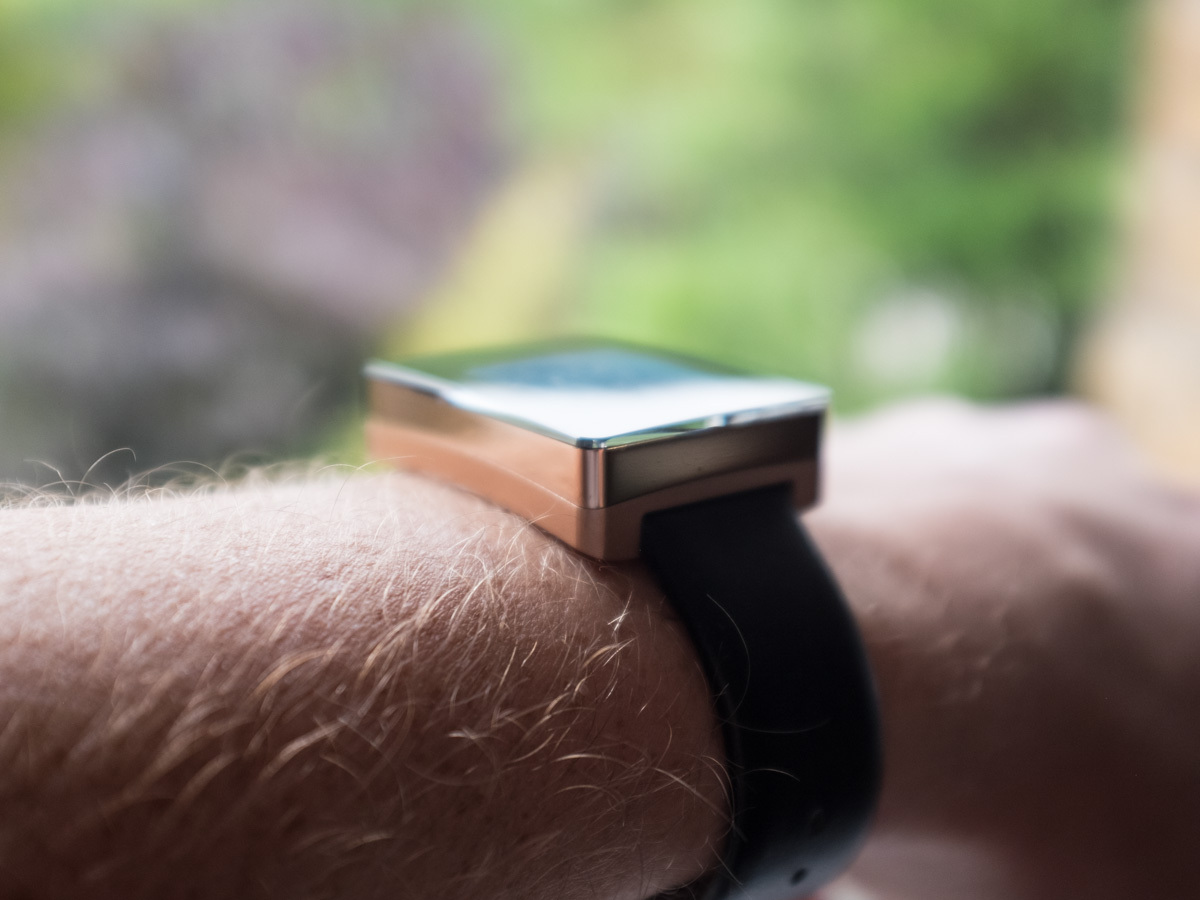
A wearable fitness tracker should give you solid facts about your condition: how much activity you’re doing; how your heart rate is responding; and how much sleep you’re actually getting.
The problem with the Wellograph is that while it‘s designed to do all of this, and present it in a beautiful way, the readings it gives just aren’t accurate enough.
And if the information it provides isn’t accurate then we may as well just carry on giving our guts a little jiggle every day to assess our fitness.
The Wellograph ticks a lot of boxes, not least by giving your gym kit a real touch of class, and shows a lot of promise in making the experience cleaner and more appealing. But if the data it collects isn’t accurate, what’s the point?
Tech specs
| Display | 1.26in Low-Power LCD + Integrated Backlight |
| Dimensions | 42 x 33 x 12.5mm |
| Connectivity | Bluetooth 4.0 Low Energy |
| Weight | 55g |
| Water resistant | 50m |
| Battery | 210mAH |
| Strap | Leather (20mm) |
| Face | Sapphire Crystal |
| Case | Stainless steel, aluminum |
Stuff Says…
An unusual but elegant design and captivating data display are plus points, but the Wellograph’s inaccurate readings let the side down
Good Stuff
Accurate sleep tracking
Good battery life
Beautifully-presented activity data
Bad Stuff
Inaccurate heart-rate data
Incaccurate step counts
Sits high off the wrist
